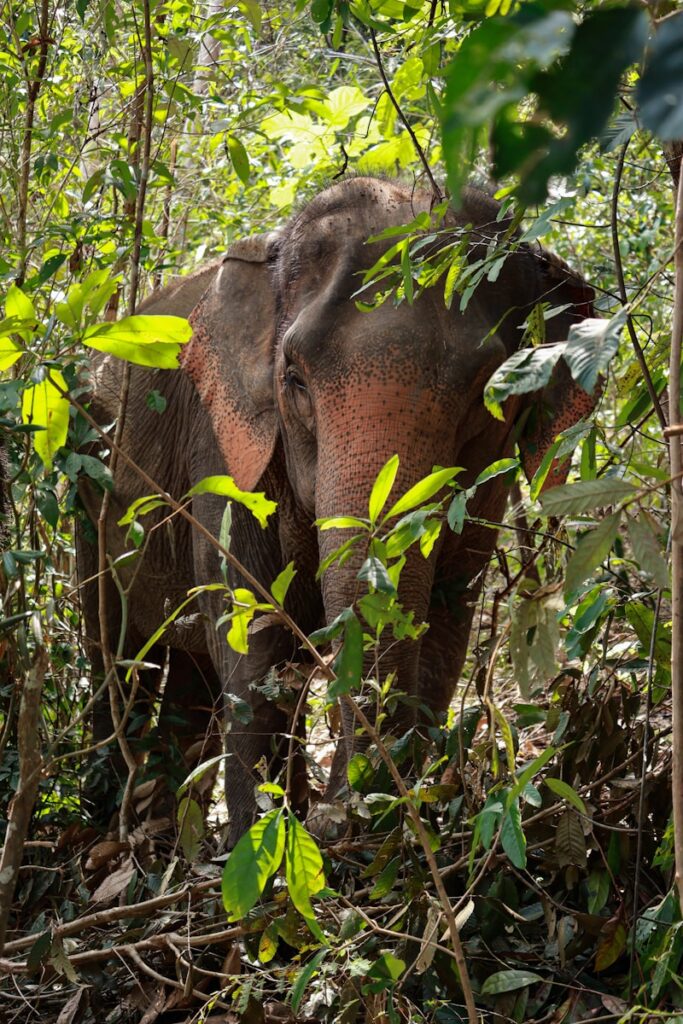
The concept of evolution, often simplified, represents one of the most profound and encompassing scientific theories, offering an elegant framework for understanding the stunning diversity and intricate interconnectedness of life on Earth. Far from a static concept, it describes a dynamic, continuous process—a grand narrative woven over billions of years, revealing how all living organisms, from the simplest microbe to the most complex mammal, are linked by a shared ancestry and a relentless march of change. This journey of biological transformation is not merely about observable differences; it delves deep into the very essence of life, influencing every aspect of form and behavior.
At its core, evolution is a testament to nature’s ceaseless innovation, driven by a suite of elegant yet powerful mechanisms that sculpt populations across successive generations. It is a field continually enriched by new discoveries, influencing not only biology but also agriculture, medicine, and even computer science. To truly appreciate the breath-taking panorama of life’s history and its ongoing saga, one must first grasp the fundamental principles that underpin this scientific cornerstone.
In this in-depth exploration, we embark on a journey to dissect the key pillars of biological evolution. We will trace its conceptual origins, understand the genetic machinery that enables its progress, and uncover the diverse wellsprings of variation that provide the raw material for life’s endless adaptation. Prepare to gain a deeper appreciation for the intricate dance of change that has shaped, and continues to shape, every living thing on our planet.
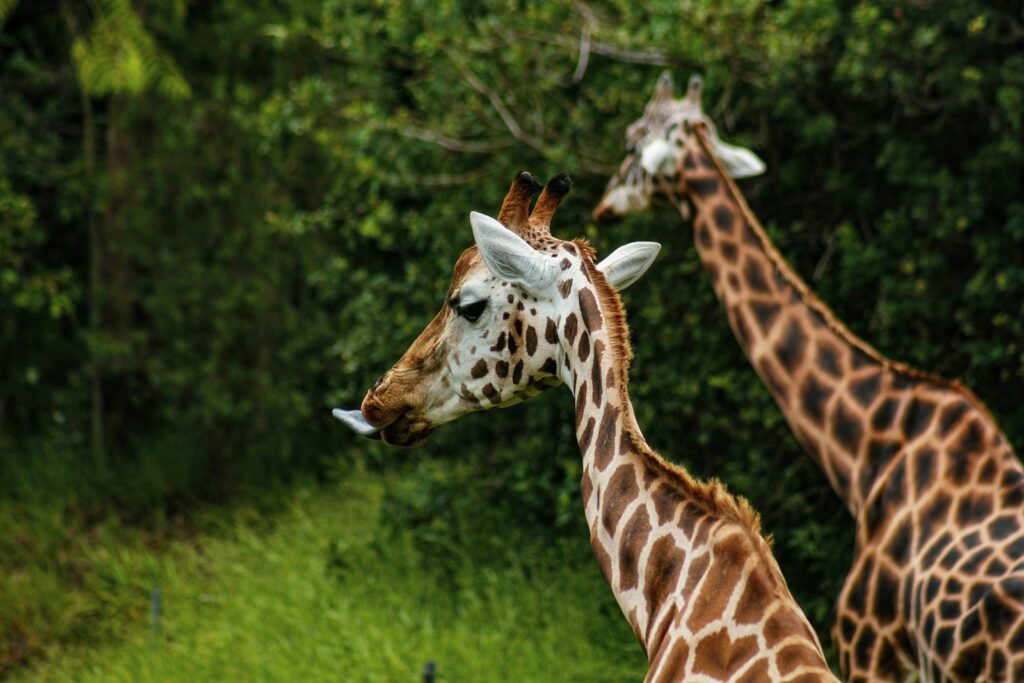
1. **The Fundamental Definition of Evolution**The term “evolution” in biology fundamentally refers to “the change in the heritable characteristics of biological populations over successive generations.” This definition encapsulates the essence of how life transforms through time, highlighting that the changes are not acquired during an individual’s lifetime but are instead passed down from one generation to the next. These heritable characteristics are the bedrock upon which the entire edifice of biological diversity is built.
Evolution is not a singular event but an ongoing process, driven by various evolutionary mechanisms. These include pivotal forces such as genetic drift and natural selection, which operate on the existing genetic variation within a population. As these processes unfold, certain characteristics within a population may become either more or less common across successive generations, leading to gradual, yet profound, shifts in the overall genetic makeup of that population.
This continuous interplay between genetic variation and evolutionary processes has been the driving force behind the immense biodiversity observed at every conceivable level of biological organization. From the molecular structures within cells to the vast array of species inhabiting Earth’s diverse ecosystems, evolution accounts for the intricate web of life we see today, providing a unifying explanation for its form, function, and distribution. Understanding this foundational definition is the crucial first step in comprehending the grand narrative of life’s transformation.
Read more about: 8 Outdated Car Habits to Stop Now: Driving Smarter for a Sustainable and Safer Future
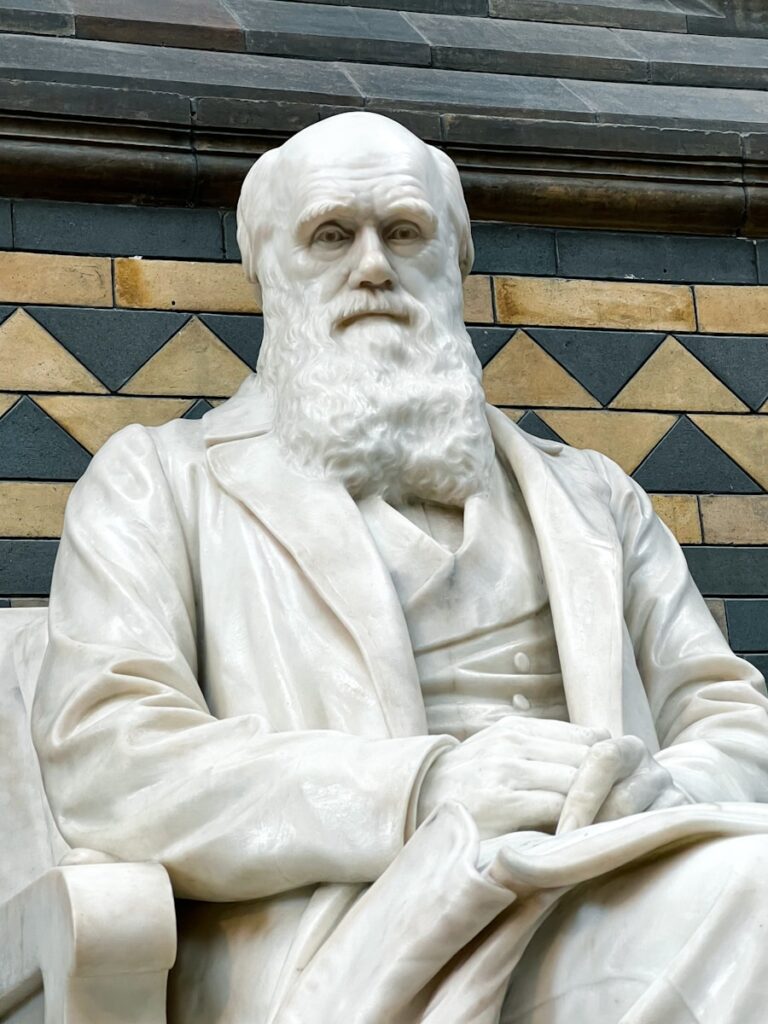
2. **Darwin, Wallace, and the Genesis of Natural Selection**The scientific theory of evolution, specifically by natural selection, emerged independently in the mid-19th century through the pioneering work of two British naturalists: Charles Darwin and Alfred Russel Wallace. Their profound insights provided a groundbreaking explanation for a fundamental question: why are organisms so remarkably adapted to their physical and biological environments? Their collective observations and deductions revolutionized biological thought, setting the stage for modern biology.
Darwin, most famously, articulated the theory in meticulous detail within his seminal work, “On the Origin of Species.” This publication not only presented the concept but also provided extensive evidence to support it, fundamentally challenging pre-existing notions of species immutability. The theory posited that organisms’ traits are not static but are molded by their interactions with the environment, a process he termed natural selection.
The principles underlying evolution by natural selection are now established by several observable facts about living organisms: (1) “more offspring are often produced than can possibly survive”; (2) “traits vary among individuals with respect to their morphology, physiology, and behaviour”; (3) “different traits confer different rates of survival and reproduction (differential fitness)”; and (4) “traits can be passed from generation to generation (heritability of fitness).” Consequently, in successive generations, members of a population are therefore more likely to be replaced by the offspring of parents with favourable characteristics for that environment.
Read more about: Beyond the Hype: Unraveling the Real Evolution That Shapes All Life!
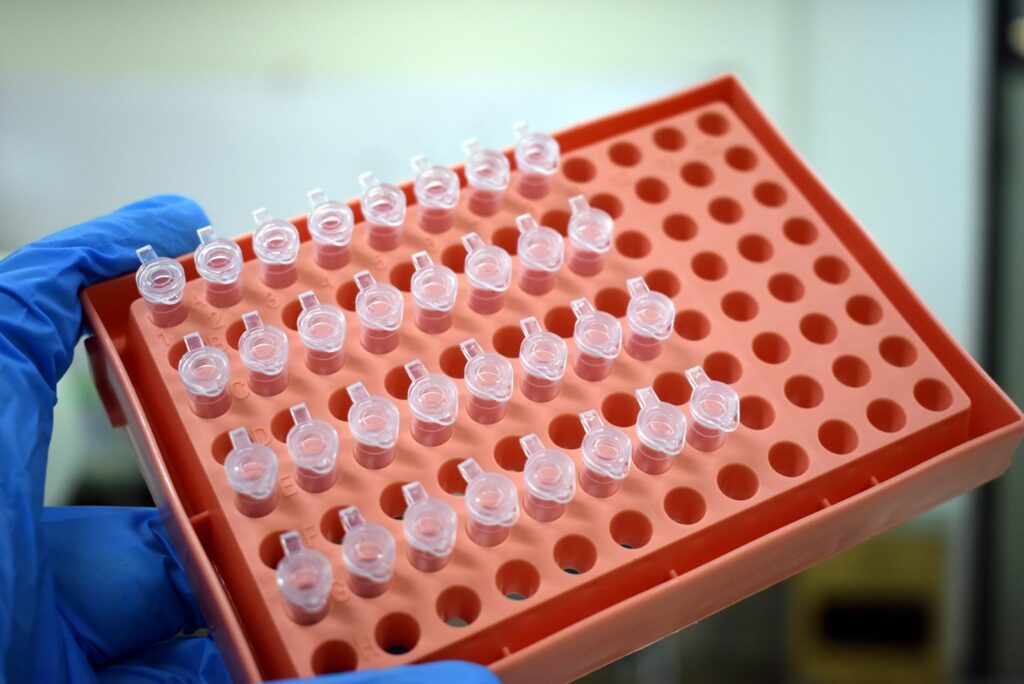
3. **The Modern Synthesis and Genetic Basis**While Darwin and Wallace laid the groundwork for evolutionary theory, the early 20th century saw the integration of their ideas with burgeoning fields like Mendelian inheritance and population genetics, giving rise to what is known as modern evolutionary theory, or the “modern synthesis.” This crucial period consolidated understanding, refuting competing ideas about evolution and establishing a more comprehensive framework for how genetic changes drive evolutionary processes. The synthesis provided a missing piece: a robust mechanism for heredity.
Central to this modern understanding is the recognition that “the basis for heredity is in DNA molecules that pass information from generation to generation.” This molecular foundation provided concrete evidence for how traits are faithfully, yet sometimes imperfectly, transmitted across generations. The discovery of DNA’s structure and function provided the physical substrate for the “heritable characteristics” that Darwin and Wallace observed, allowing for a deeper, more mechanistic understanding of evolution.
Within this synthesized view, the processes that actively change DNA in a population are clearly identified. These include “natural selection,” which favors advantageous traits, and “genetic drift,” which involves random fluctuations in allele frequencies. Additionally, “mutation,” the ultimate source of all new genetic variation, and “gene flow,” the movement of genes between populations, are recognized as fundamental drivers of evolutionary change. Together, these processes explain the dynamic interplay that continually shapes the genetic landscape of populations, leading to the ongoing evolution of life.
Read more about: Unlocking the Universe’s Building Block: 14 Foundational Facts About Hydrogen That Point to a Future Energy Revolution
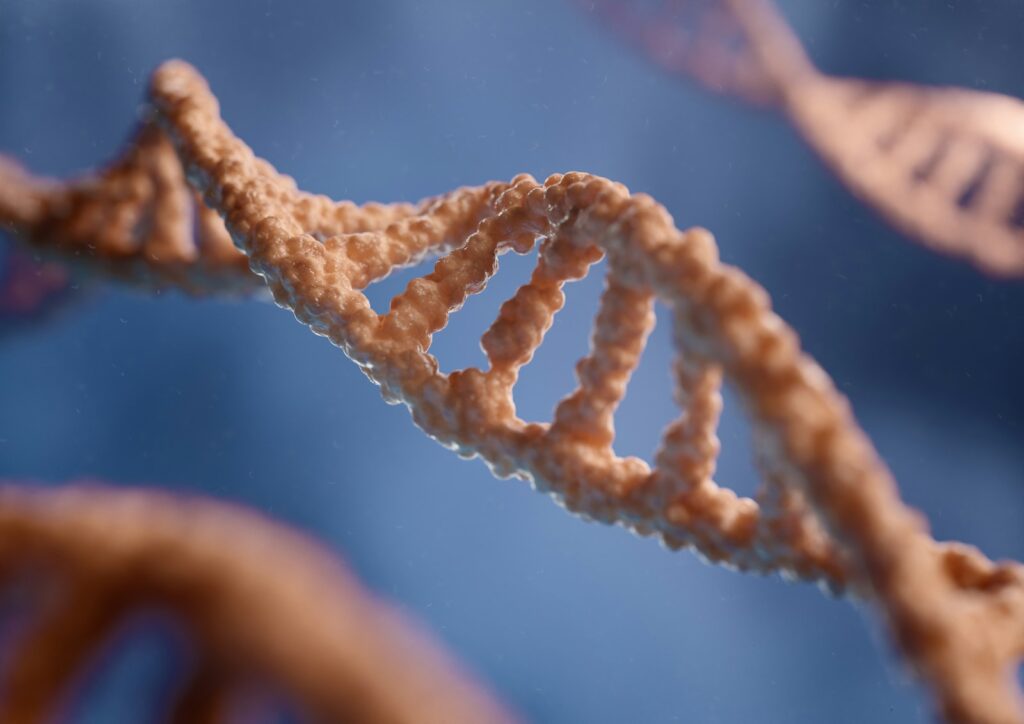
4. **Heredity: The Mechanism of Trait Transmission**Evolution fundamentally operates through changes in “heritable characteristics”—the inherited characteristics of an organism passed down through generations. To illustrate, consider human eye color; an individual typically inherits a specific “brown-eye trait” or “blue-eye trait” from their parents. These inherited traits are not random; they are meticulously controlled by segments of DNA known as genes. The complete collection of these genes within an organism’s genetic material is termed its genotype, serving as the blueprint for its biological potential.
While the genotype represents the genetic potential, the actual “complete set of observable traits that make up the structure and behaviour of an organism is called its phenotype.” This includes everything from physical appearance and physiological functions to behavioral patterns. It is important to note that a phenotype is not solely determined by the genotype; it also arises from the intricate “interaction of its genotype with the environment.” Some traits might even be considered neutral, having no immediate adaptive advantage or disadvantage.
A clear distinction must be made: not all observable characteristics are inherited. For instance, suntanned skin, while visible, is a result of a person’s genotype interacting with sunlight and is “not passed on to people’s children.” However, the *ability* of the skin to tan is a phenotypic expression rooted in genetic variation; some individuals tan more readily than others, due to differences in genotypic variation. A striking example of this genetic influence is albinism, an inherited trait where individuals “do not tan at all and are very sensitive to sunburn,” highlighting how genetic makeup dictates the range of phenotypic responses to environmental stimuli.
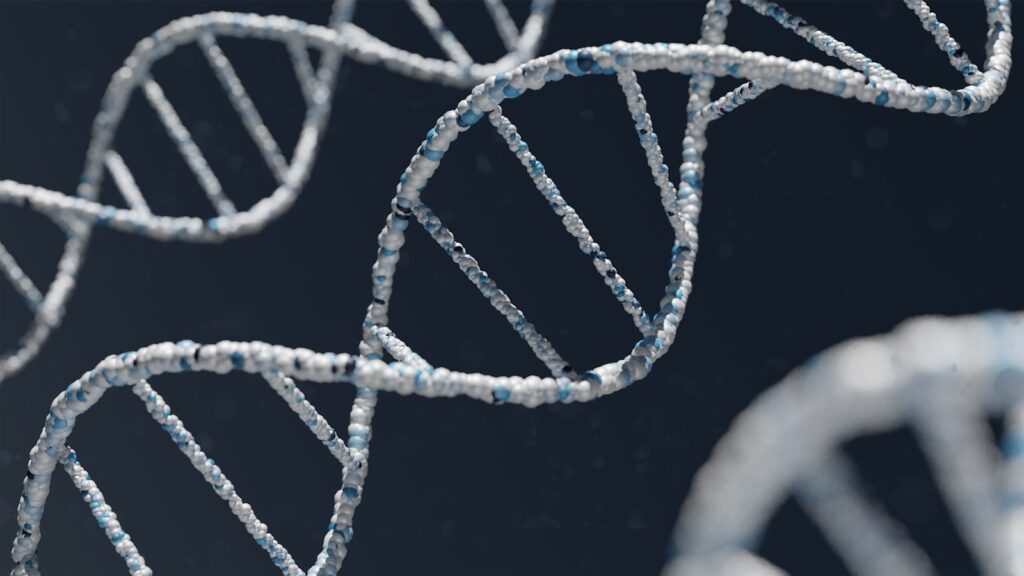
5. **Sources of Genetic Variation: Fueling Evolutionary Change**Evolution, as a dynamic process, is entirely dependent on the existence of “genetic variation within a population.” Without this diversity, there would be no raw material for evolutionary forces like natural selection to act upon, and populations would remain static. The continuous emergence and maintenance of this variation are therefore crucial for the ongoing adaptation and diversification of life. Understanding its sources is paramount to grasping the mechanics of evolution.
The primary wellsprings of genetic variation are multifold, each contributing in distinct ways to the genetic landscape of a population. At the most fundamental level, “variation comes from mutations in the genome.” These random changes in DNA sequences introduce entirely new alleles into a population, serving as the ultimate source of novelty. Beyond individual mutations, the intricate dance of “reshuffling of genes through ual reproduction” generates vast new combinations of existing alleles, producing offspring genetically distinct from their parents.
Furthermore, “migration between populations (gene flow)” plays a significant role in introducing or reintroducing genetic diversity. When individuals move between separate populations, they carry their genes with them, potentially introducing new alleles or altering allele frequencies in the recipient population. Despite this constant influx of new variation, a fascinating aspect is that “most of the genome of a species is very similar among all individuals of that species,” underscoring the underlying unity of life while still allowing for the subtle differences that drive evolutionary change. Recent discoveries in evolutionary developmental biology also reveal that “even relatively small differences in genotype can lead to dramatic differences in phenotype both within and between species,” emphasizing the power of variation.
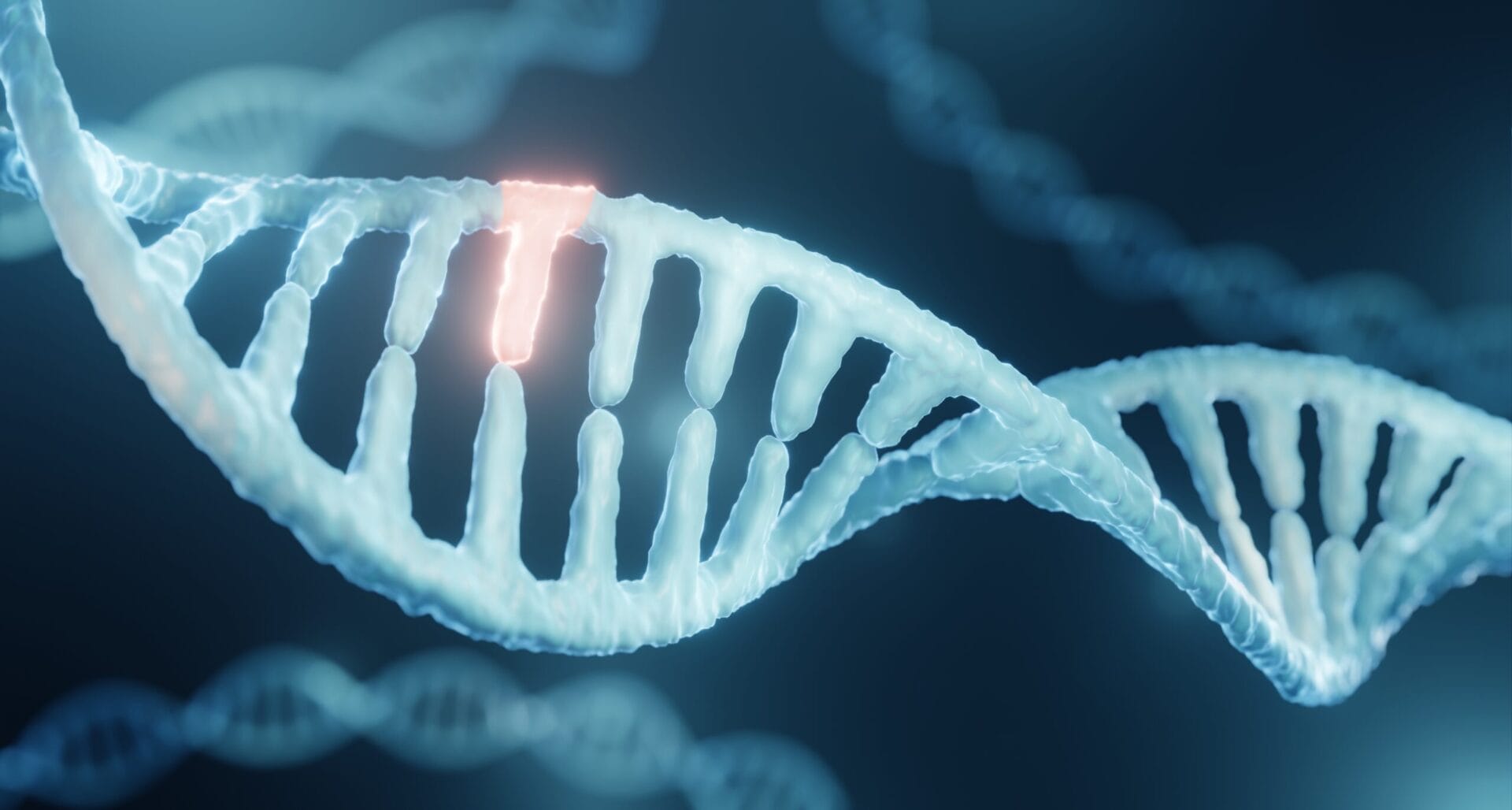
6. **Mutation: The Ultimate Source of Novelty**Mutations are fundamentally defined as “changes in the DNA sequence of a cell’s genome and are the ultimate source of genetic variation in all organisms.” They represent the primary mechanism by which new genetic material, and thus new traits, are introduced into a population’s gene pool. Without mutations, evolution as we understand it would cease, as there would be no raw material for natural selection or other evolutionary forces to act upon.
When mutations occur, their effects can vary widely. They “may alter the product of a gene, or prevent the gene from functioning, or have no effect.” Intriguingly, approximately half of mutations occurring in the coding regions of protein-coding genes are “deleterious” (harmful), while the other half are “neutral,” having no immediate observable effect. Only a “small percentage of the total mutations in this region confer a fitness benefit,” highlighting the often random and non-directed nature of mutational events. However, these rare beneficial mutations are critical for long-term adaptation.
Mutations can manifest in various forms, including large-scale changes such as the “duplication of part of a chromosome.” Such duplications are particularly significant because they “can introduce extra copies of a gene into a genome,” providing a major source of the raw material needed for new genes to evolve. Most new genes do not arise from scratch but “evolve within gene families from pre-existing genes that share common ancestors.” A striking example is the human eye, which utilizes four light-sensing genes, all descended from a single ancestral gene, illustrating how duplication followed by mutation can lead to functional diversification. This process is easier once a gene has been duplicated because it increases the redundancy of the system, allowing one gene to acquire a new function while the other maintains its original role.
Beyond mere duplication, other types of mutations can generate entirely new genes from previously noncoding DNA, a phenomenon termed “de novo gene birth.” This showcases the extraordinary capacity of the genome to innovate. Additionally, “the generation of new genes can also involve small parts of several genes being duplicated, with these fragments then recombining to form new combinations with new functions (exon shuffling).” In this process, domains act as modular units with simple independent functions, which can be mixed and matched to create novel proteins with complex functions, as seen in polyketide synthases, large enzymes that synthesize antibiotics by orchestrating up to 100 independent catalytic steps like an assembly line. An observable example of mutation is found in wild boar piglets, which typically have camouflage stripes. However, “mutations in the melanocortin 1 receptor (MC1R) disrupt the pattern,” leading to different colorations, including the dominant black seen in many domestic pig breeds.
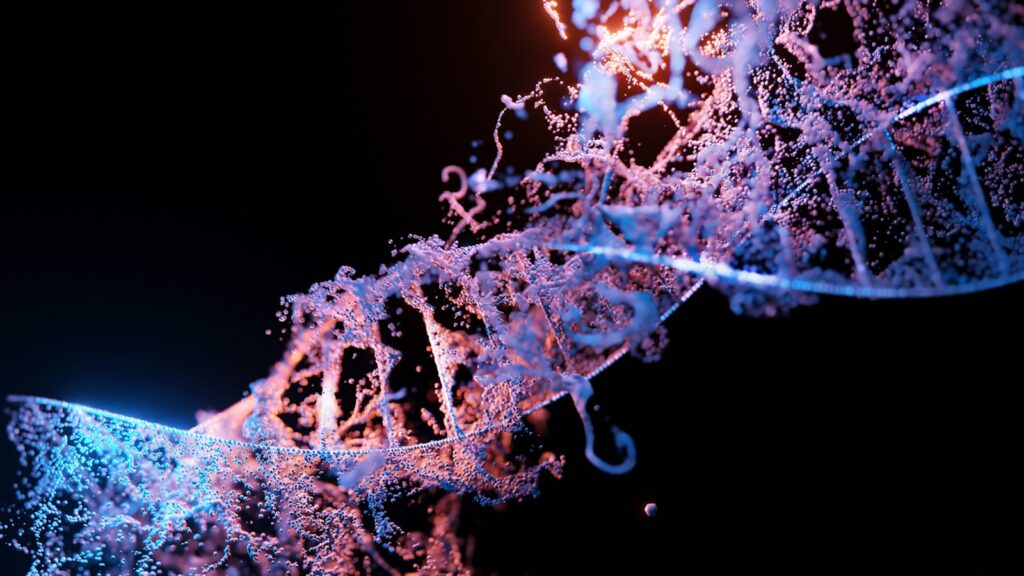
7. **Gene Flow: Connecting Populations and Expanding Genetic Horizons**Gene flow is fundamentally the “exchange of genes between populations and between species,” serving as a crucial source of variation. It introduces new alleles or alters existing frequencies, thereby fundamentally altering the genetic landscape by facilitating their spread across populations. This dynamic process ensures genetic interconnectedness among living systems.
This movement involves individuals migrating between distinct populations, such as mice between inland and coastal habitats, or pollen dispersing between heavy-metal-tolerant and sensitive grass populations. Such movements physically carry genes, subtly blurring distinctions between groups and underscoring biological communities’ inherent interconnectedness. Gene flow is a constant reweaving of life’s genetic tapestry.
Gene transfer also extends beyond individual movement, occurring between different species. This can manifest as hybrid organisms, or more commonly, through horizontal gene transfer, particularly prevalent among bacteria. This latter mechanism has profound medical implications, significantly contributing to the rapid spread of antibiotic resistance as bacteria efficiently transfer resistance genes to other species.
Horizontal gene transfer is not exclusive to prokaryotes; it has also been observed from bacteria to eukaryotes, such as in the yeast *Saccharomyces cerevisiae* and the adzuki bean weevil *Callosobruchus chinensis*. Large-scale transfers, like those seen in bdelloid rotifers acquiring genes from bacteria, fungi, and plants, further exemplify this. Viruses also act as vectors, facilitating DNA transfer even across broad biological domains, demonstrating the pervasive nature of genetic exchange. Monumental gene transfers historically shaped eukaryotic life, with ancestors acquiring chloroplasts and mitochondria from bacteria, even suggesting eukaryotes themselves may originate from such transfers.
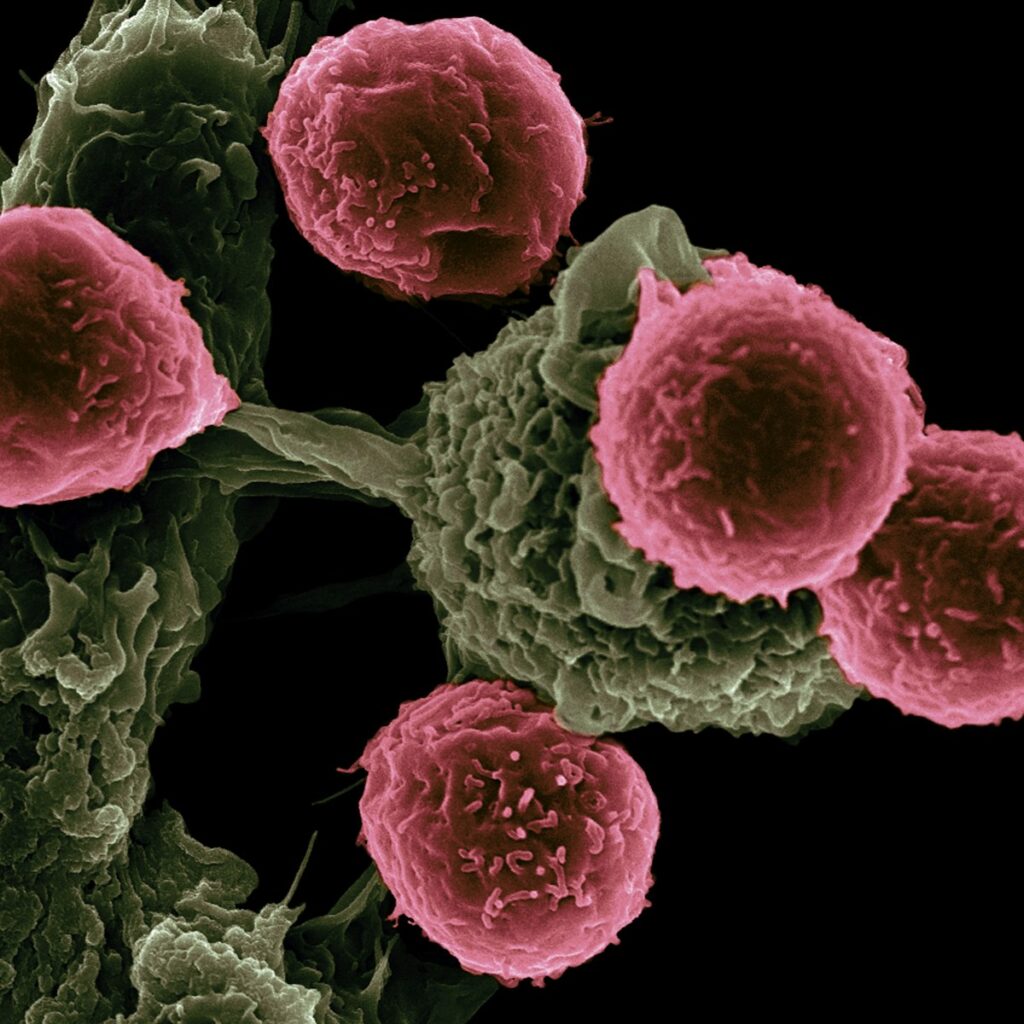
8. **Epigenetic Inheritance: Beyond the DNA Sequence**While DNA sequence changes are central to heredity, not all heritable changes directly alter the nucleotide sequence. These fascinating phenomena are classified as epigenetic inheritance systems. They represent an additional layer of heritable information superimposed on the genetic code, indicating that environmental influences and cellular states can be passed down across generations without modifying the underlying DNA sequence.
Among the discovered epigenetic inheritance systems at the organismic level are mechanisms like DNA methylation, which marks chromatin, and self-sustaining metabolic loops that perpetuate specific cellular states. Gene silencing by RNA interference, where small RNA molecules regulate gene activity, and the three-dimensional conformation of proteins, such as prions, also demonstrate how traits can be transmitted beyond traditional Mendelian genetics.
Developmental biologists actively explore how complex interactions within genetic networks and intricate communication among cells generate heritable variations. These variations are believed to underpin developmental plasticity, where an organism’s phenotype can be molded by environmental conditions, and canalisation, where development is buffered against genetic or environmental perturbations, broadening our understanding of “heritable characteristics.”
Heritability can even manifest at larger scales, transcending individual genes. Ecological inheritance, for instance, occurs through niche construction, where organisms regularly modify their environment. This creates a legacy of effects that, in turn, influence the selective pressures on subsequent generations. The inheritance of cultural traits and the profound evolutionary impact of symbiogenesis, the formation of new organisms through symbiotic relationships, offer further compelling examples beyond direct genetic control.

9. **Natural Selection: The Unyielding Sculptor of Adaptation**From a neo-Darwinian perspective, evolution unfolds through changes in allele frequencies within interbreeding populations, such as the increasing prevalence of a black allele in a moth population. Among the mechanisms driving these crucial shifts, natural selection stands as the preeminent force, a profound process by which traits enhancing an organism’s survival and reproduction become progressively more common across successive generations within a population. It is the core principle explaining the exquisite fit of organisms to their environments.
The power of natural selection rests on three observable facts about living organisms: first, “variation exists within populations of organisms with respect to morphology, physiology and behaviour (phenotypic variation)”; second, “different traits confer different rates of survival and reproduction (differential fitness)”; and third, these traits are heritable, meaning they “can be passed from generation to generation (heritability of fitness).” Given that “more offspring are often produced than can possibly survive,” these conditions create a relentless competition for survival and reproduction.
Consequently, organisms endowed with traits that provide them with a competitive advantage are demonstrably more likely to bequeath these advantageous characteristics to the next generation. This process leads to a remarkable quality, termed teleonomy, whereby natural selection creates and preserves traits that appear to be exquisitely “fitted for the functional roles they perform.” The central concept here is the evolutionary fitness of an organism, measured by its “ability to survive and reproduce, which determines the size of its genetic contribution to the next generation.”
An allele that boosts fitness, even marginally, possesses a higher probability of becoming prevalent within a population over generations—these traits are said to be “selected for.” Conversely, alleles that confer lower fitness are likely to become rarer, experiencing selection against them. This dynamic is profoundly influenced by the environment; a trait neutral or harmful in one context might become beneficial if environmental conditions shift. Remarkably, “re-activation of dormant genes” can lead to the “re-occurrence of traits thought to be lost,” phenomena known as atavisms, such as hindlegs in dolphins.
Natural selection, acting on traits that vary across a range, can manifest in three distinct forms. Directional selection involves a shift in the average value of a trait over time, as seen when organisms gradually become taller. Disruptive selection, conversely, favors extreme trait values, potentially leading to two distinct common values. Finally, stabilizing selection acts against extreme trait values at both ends, reducing variance around the average. Natural selection operates within an ecosystem, where organisms interact with all physical and biological elements, and can act at multiple levels—from genes (e.g., transposons) to individuals, groups (e.g., cooperation), and species—often simultaneously.

10. **Genetic Drift: The Random Dance of Allele Frequencies**Beyond the directed pressures of natural selection, evolution is also shaped by the unpredictable currents of genetic drift—the “random fluctuation of allele frequencies within a population from one generation to the next.” This stochastic process highlights the role of chance in evolution, particularly when selective forces are either absent or relatively weak, allowing allele frequencies to drift upwards or downwards due to sampling error.
This random walk of allele frequencies continues until an allele reaches fixation, meaning it either completely disappears from the population or entirely replaces all other alleles at that locus. Thus, genetic drift, purely by chance, can lead to the elimination of certain alleles from a population, irrespective of their adaptive value. It can also cause initially identical populations to diverge genetically, even in the absence of any differing selective pressures.
According to the influential neutral theory of molecular evolution, a substantial portion of evolutionary change is attributable to the “fixation of neutral mutations by genetic drift.” In this framework, most genetic alterations observed in a population arise from a constant pressure of mutation combined with the random process of genetic drift. While this original form has been debated, a more refined version, the nearly neutral theory, suggests that mutations considered effectively neutral in small populations may not be so in larger ones.
Other theories propose that genetic drift is overshadowed by additional stochastic forces, notably “genetic hitchhiking,” also known as genetic draft. Furthermore, the concept of constructive neutral evolution (CNE) offers an explanation for how complex systems can emerge and spread within a population through neutral transitions, attributed to principles like excess capacity. The pace at which a neutral allele becomes fixed by genetic drift is intimately linked to “effective population size” (accounting for inbreeding, smallest lifecycle stage), occurring “more rapid in smaller populations.” Pinpointing the relative importance of selection versus neutral processes like drift remains an active area of contemporary evolutionary research.
Read more about: Beyond the Hype: Unraveling the Real Evolution That Shapes All Life!
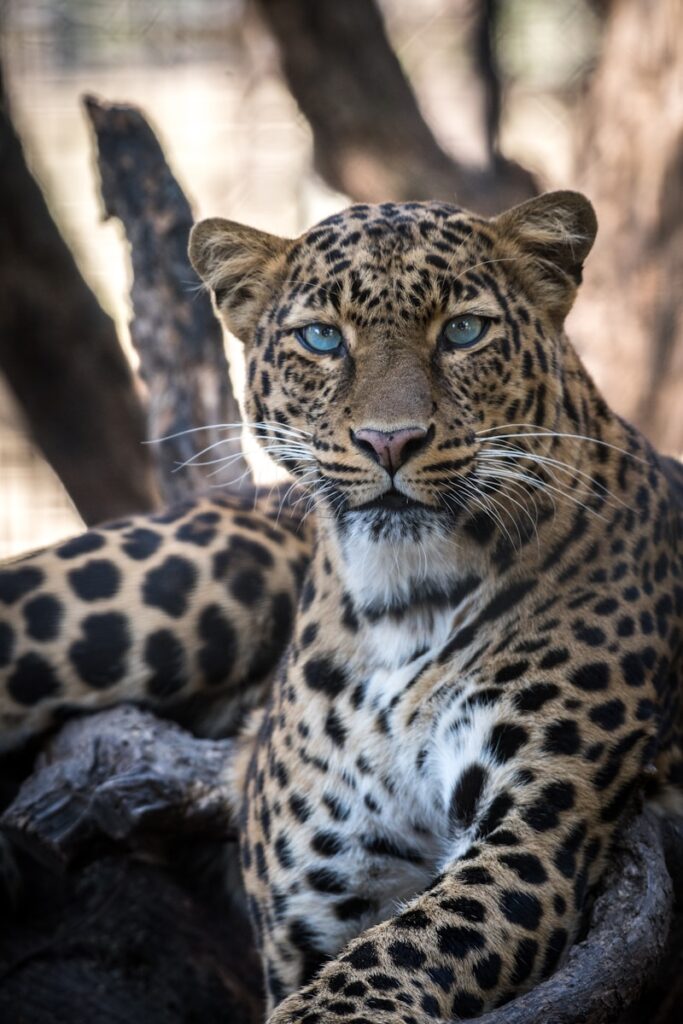
11. **Mutation Bias and Genetic Hitchhiking: Subtle Influences on Evolutionary Trajectories**While mutation is the ultimate source of genetic novelty, the direction and frequency of these changes are not entirely random. This leads to the concept of mutation bias, which describes a “difference in expected rates for two different kinds of mutation,” such as a GC-AT bias. Early evolutionary thinkers like J.B.S. Haldane and Ronald Fisher contended that, given mutation’s relatively weak pressure, it would generally be ineffectual in shaping evolution unless selection was absent or mutation rates were exceptionally high.
However, the advent of the molecular era sparked a renewed interest in neutral evolution, revisiting the potential impact of mutation bias. Scientists such as Noboru Sueoka and Ernst Freese proposed that systematic biases in mutation could explain systematic differences in genomic GC composition between species. The identification of a GC-biased *E. coli* mutator strain in 1967, coupled with the neutral theory, solidified the plausibility of mutational explanations for molecular patterns. These biases are frequently incorporated into models of codon usage and have significantly contributed to the understanding of genome composition evolution.
Contemporary thought on mutation bias has evolved beyond the original “pressures” theory. More recent work indicates that when evolution relies on new mutations rather than pre-existing variation, mutational and developmental biases in the “introduction of variation (arrival biases)” can direct evolution without requiring neutral conditions or high mutation rates. Indeed, several studies suggest that mutations involved in adaptation frequently reflect common mutation biases, although this interpretation is not without debate.
Shifting gears, “genetic hitchhiking,” also referred to as genetic draft, reveals another intricate aspect of how genes travel through generations. While recombination allows alleles on the same DNA strand to separate, its rate is relatively low—approximately “two events per chromosome per generation.” This means that genes located in close proximity on a chromosome often remain linked and “tend to be inherited together.” A beneficial allele within such a linked group can trigger a “selective sweep,” where it rapidly increases in frequency, and crucially, linked neutral alleles in the same haplotype also become more common through this effect. This genetic draft, where neutral genes are inadvertently pulled along by selected ones, affects the effective population size.

12. **The Grand Outcomes of Evolution: Adaptation, Speciation, and Extinction**The ceaseless march of evolution profoundly influences every conceivable aspect of an organism’s form and behavior, culminating in a dazzling array of “natural outcomes” that define the biological world. Foremost among these are the specific behavioral and physical adaptations, the direct product of natural selection, which inherently elevate an organism’s fitness by enhancing its ability to find food, deftly evade predators, or successfully attract mates. Evolution also fosters cooperation, as organisms frequently benefit from aiding their relatives or engaging in mutually advantageous symbiotic relationships. Over longer timescales, this dynamic process orchestrates the creation of entirely new species and, inevitably, the loss of others.
The outcomes of evolution are often categorized by their timescale. Microevolution refers to the smaller-scale evolutionary changes occurring “within a species or population,” primarily seen as “shifts in allele frequency and adaptation.” In contrast, macroevolution encompasses evolution at or “above the level of species,” including the grand processes of “speciation and extinction.” Crucially, macroevolution is understood to be the cumulative result of “long periods of microevolution,” indicating that the distinction is not fundamental but merely reflects the temporal scope of the observed changes.
**Adaptation: The Hallmark of Environmental Fit**
Adaptation, a cornerstone concept in evolution, describes the profound process by which an organism becomes “better suited to its habitat” or habitats. The term also refers to the specific “trait that is important for an organism’s survival,” such as the specialized teeth of horses perfectly suited for grinding tough grasses. Theodosius Dobzhansky eloquently defined adaptation as “the evolutionary process whereby an organism becomes better able to live in its habitat or habitats,” with an adaptive trait being “an aspect of the developmental pattern of the organism which enables or enhances the probability of that organism surviving and reproducing.” Adaptations are the direct, tangible products of natural selection, often involving the gain of a new feature or the loss of an ancestral one.
A compelling illustration of adaptation is observed in bacterial populations evolving antibiotic resistance, either by modifying the drug’s target or by boosting transporters that pump the drug out of the cell. Other striking examples include *Escherichia coli* evolving to use citric acid as a nutrient, and *Flavobacterium* developing an enzyme to degrade nylon manufacturing by-products. A fascinating, albeit debated, notion posits that some adaptations may even increase an organism’s “evolvability”—its inherent capacity to generate genetic diversity and adapt through natural selection.
The evolutionary journey of adaptation progresses through the “gradual modification of existing structures.” This explains why structures with similar internal organization can perform vastly different functions across related organisms, as a single ancestral structure becomes specialized over time. Beyond overt structural similarities, the concept of deep homology reveals that even organs with little apparent structural resemblance, such as the eyes of arthropods, squids, and vertebrates, can rely on a common suite of homologous genes to control their assembly and function, demonstrating shared ancient genetic blueprints. During this evolutionary refinement, some structures may lose their original utility, diminishing into “vestigial structures” that serve little or no function in a current species, yet clearly had a purpose in ancestral or closely related species. Classic examples include the non-functional remnants of eyes in blind cave fish, the wings of flightless birds, the presence of hip bones in whales, and human wisdom teeth or the vermiform appendix. These structures provide compelling evidence of our evolutionary past.
**Speciation and Extinction: The Dynamic Flux of Life**
While adaptation fine-tunes organisms to their environments, the grander processes of speciation and extinction reshape the very inventory of life on Earth. Speciation involves the “repeated formations of new species” through mechanisms that prevent interbreeding between ancestral populations, leading to increased biodiversity. Conversely, extinction represents the “loss of species,” a stark reality throughout Earth’s evolutionary history that prunes the branches of the tree of life. These processes, alongside changes within species (anagenesis), continually sculpt biodiversity.
A common misconception is that evolution is a guided process with inherent “goals, long-term plans, or an innate tendency for ‘progress’.” In reality, evolution operates without a predetermined agenda and does not inherently drive toward greater complexity. Although complex species have indeed evolved, their emergence is often a side effect of a general increase in the overall number of organisms. Importantly, simpler forms of life, particularly microscopic prokaryotes, continue to dominate the biosphere, constituting about half the world’s biomass and the vast majority of Earth’s biodiversity. They have been, and remain, the prevailing life forms throughout Earth’s history, with complex life only appearing more diverse due to its greater visibility. Indeed, the rapid reproduction of microorganisms makes their evolution particularly crucial for research, allowing scientists to study experimental evolution and observe adaptation in real time.
As we conclude this comprehensive exploration of biological evolution, it becomes clear that life’s journey is a magnificent, ongoing saga of change, driven by an intricate dance of variation, inheritance, and powerful forces that continuously shape the living world. From the molecular intricacies of gene flow and epigenetic signals to the sweeping grandeur of natural selection, speciation, and extinction, evolution remains the unifying theory that illuminates the breathtaking diversity and profound interconnectedness of all life on Earth.




